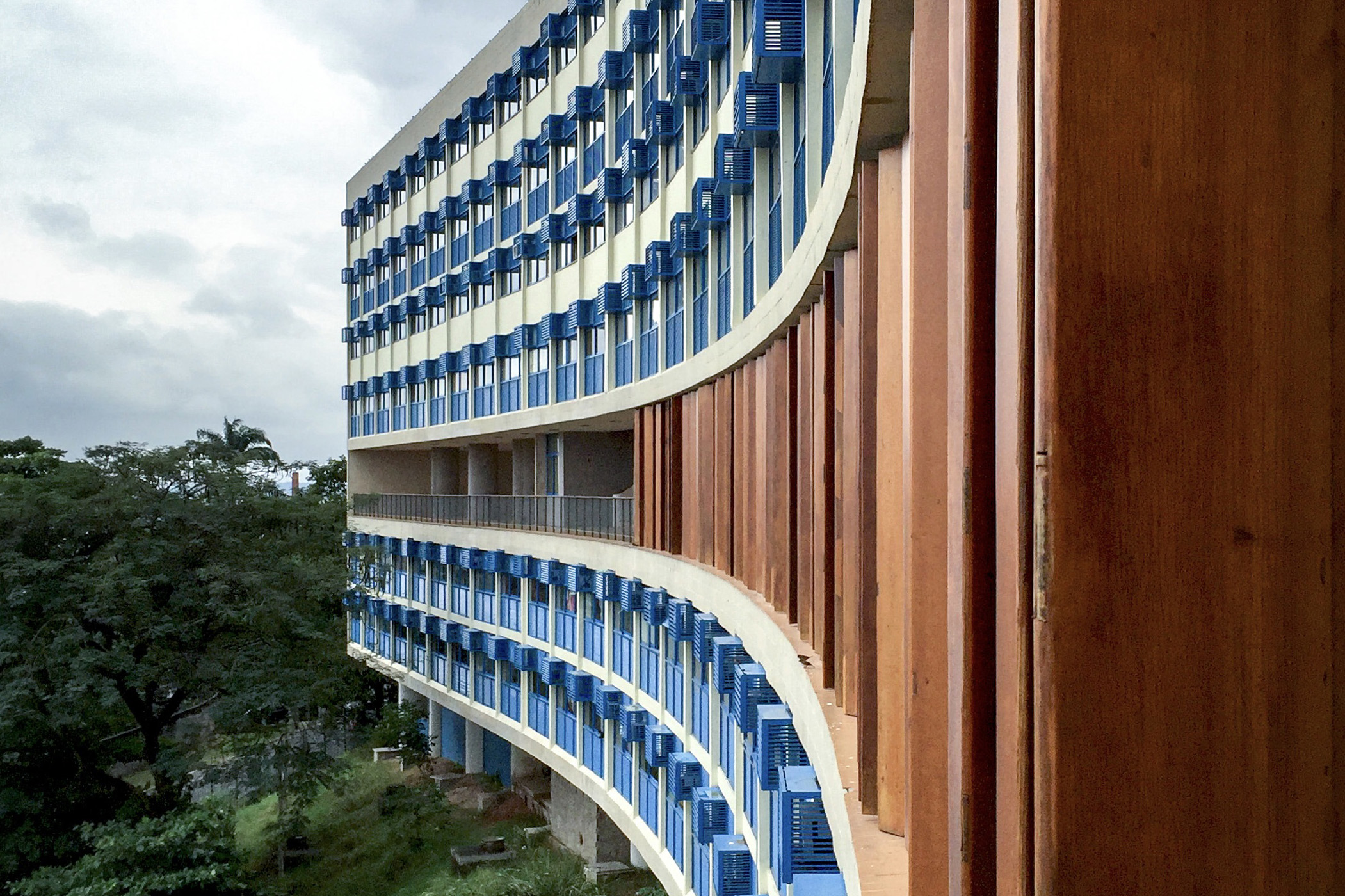
Suggested Day Tours
In our tours ready to book we aim covering amazing landmarks and architecture gems as well as the city's unique history of urban development.
Suggested Day Tours
In our suggested day and half-day tours we aim covering amazing landmarks and architecture gems as well as the city's unique history of urban development. See here a list of our most booked tours:
#1 RIO FROM PAST TO PRESENT
Rio‘s Historic Center is a rich conglomerate of buildings of different eras. From the first settlements in the 16th until today numerous urban redesigns have changed and formed what Centro is today. In this walking tour we will understand the most important interventions of the urban reformations and see neocolonialist, modern as well as contemporary buildings. A visit to the landmark Ministry of Education and Health by Le Corbusier and Lúcio Costa is included in the tour.
Highlights of the Tour
MAR Museum of Arts Rio de Janeiro by Bernardes Arquitetos
Museum of Tomorrow by Santiago Calatrava
Casa França by Grandjean Montigny
Praça XV and Paço Imperial
Confeitaria Colombo
Largo da Carioca and Convento Santo Antonio
Petrobras Headquarters by Forte-Gandolffi Associates
BNDES Headquarters by Joel Ramalho Junior
Teatro Municipal by Francisco de Oliveira Passos and Albert Gilbert
Ministry of Education and Health by Lúcio Costa, with Le Corbusier and Oscar Niemeyer
Press Building ABI by Brothers Roberto
Biblioteca Nacional by Sousa Aguiar and Eliseu Visconti
MAM Museu de Arte Moderna by Affonso Eduardo Reidy
#2 Art Deco Copacabana & SOUTH ZONE
The city’s South Zone was populated starting in the 1920s, after the access was improved by a tunnel to this initially remote area. The famous hotel Copacabana Palace was one of the very first buildings in this area and attracted many tourists. The buildings followed the master plan of a grid city as it was common in Europe at the time. Besides magnificent hotels, there are residences in art deco and modern style and museums to visit. In contrast to this glamorous side, many low income communities (favelas) are located on the hills immediately next to it. These informal settlements were "pacified" only a few years ago and some were given better access to city with the construction of cable cars or elevators. We will explore the areas around the beaches and the lagoon and get also a better understanding of the city's social patchwork.
Highlights of the Tour
Copacabana Palace by Joseph Gire
Museu da Imagem e do Som by Diller and Scofidio
Elevator Rubem Braga
Obra do Berço and Hospital Lagoa by Oscar Niemeyer
Botanical Garden
Parque Lage
Moreira Salles Institut (IMS) by Olav Redig de Campos
#3 RIO Urban RENEWAL
An area of five square kilometers is subject of this totally planned re-urbanization. Its goal is to give access to a good infrastructure as well as schools and culture to former inhabitants and bring new life into the old harbor area. The revitalization plan called “Porto Maravilha”, is the first that brings a value to this centrally located area. It is a very complex project taking into account the district’s history, bringing together archeological, infrastructural as well as economical interests.
Highlights of the Tour
MAR Museum of Arts Rio de Janeiro, Bernardes Architects
Museum of Tomorrow, Santiago Calatrava
Praça de Mauá
Avenida Rodrigues Alves, Boulevard Olimpico and the port warehouses
Circuit of the African Heritage, Cais do Valongo, Pedra do Sal
Bhering Factory, cultural center
Cablecar Favela Providência
#4 OSCAR NIEMEYER'S OEUVRE
Oscar Niemeyer got worldwide fame with the construction of Brasília. In his home town Rio de Janeiro he started his activities as an intern with Lucio Costa. His first oeuvre is the day nursery "Obra do Berço". Coming back from exile during the military dictatorship (1964-86), he continued his works in Rio and built the impressive Museum Niteroi, standing like a flower on a rock at the Guanabara Bay. The FGV University is one of his last creations, finished only after his death in 2012. In this tour we'll visit all of these buildings and are able to see and understand the development in his work.
Highlights of the Tour
MAC Museu de Arte Contemporanea, Niteroi
Caminho Niemeyer, Niteroi
Banco Boavista
FGV University
Day Nursery "Obra do Berço"
Hospital Lagoa
Casa das Canoas, São Conrado
Hotel Melia, São Conrado
#5 MODERN BRAZIL
Brazilian modern architecture caught world wide attention with the sinuous and lightweight constructions. Many talented architects fed the fame with their innovations and creativity. Using the principles of modern European architecture and adapting them to the Brazilian climate and culture, they created a very own style. Today, there is a huge heritage of modern architecture in Brazil and Rio de Janeiro which is topic of this tour.
Highlights of the Tour
Residential Complex Pedregulho, Affonso Reidy
Ministry of Education and Culture MEC, Lucio Costa with Le Corbusier
Press Building ABI, Roberto Brothers
Museum of Modern Arts MAM, Affonso Reidy
Institute Moreira Salles IMS, Olav Redig de Campos
Guinle Park, Lucio Costa
#6 TROPICAL LANDSCAPE DESIGN
Garden and landscape design was taken and defined by European style. Even in Brazil, former colony of Portugal, where climate is different, the paradigm shift has been introduced only in the 1940s. Roberto Burle Marx was the first Brazilian landscape architect to use endemic plants in garden and landscape design. Flamengo Park and his sitio in Rio de Janeiro are just two very impressive examples of his vast oeuvre.
Highlights of the Tour
Sitio Burle Marx
Jardim Botanico
Flamengo Park (Aterro), Roberto Burle Marx
Parque Lage
All itineraries may be subject to change





